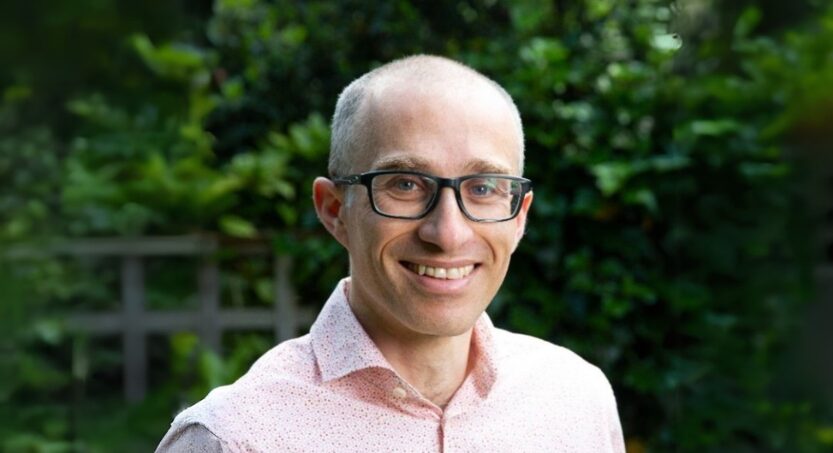Adam Ognall on his ‘fantastic vantage point’ of philanthropy

Philanthropy Australia’s Adam Ognall has taken on a different focus in his new role as Executive Director Partnerships and Practice. Here, he talks about his vision for driving forward best practice and supporting strong relationships across the sector. In particular, he explains how the information shared in Philanthropy Australia’s recent Better Philanthropy Telescope report fits into our strategy and outlook for 2025.
1. What’s the vision for taking partnerships and practice forward at Philanthropy Australia?
We see our partnerships in two ways. The first is the partnership with the sector to support our key priorities as the peak body, including through our Strategic Funders collaboration and our Philanthropy Champions program. The second is about how Philanthropy Australia shows up and contributes to the sector, whether through hosting initiatives such as LEAF (the evaluation network) and NEXUS or in how we participate in projects. This is about our ways of working with the sector and answering what is our useful contribution?
That meshes nicely with thinking about how we, through our activities and thought leadership, drive forward the best of philanthropy through lifting practice. That’s everything from our peer networks to our recent Telescope report, which is about trying start a conversation as to what people are thinking about.
Ultimately, it’s layering all these activities and connections to drive the mission of creating a fairer and more generous Australia. The crucial element of that being the storytelling. How do we tell those stories through our formal MarComms, but what is the story of the sector we’re telling to ourselves and those who engage with philanthropy?
2. What role does Telescope play in influencing Philanthropy Australia’s strategy?
There is a lot of wisdom and foresight in the philanthropic and for-purpose sector and that was the genesis of developing Telescope. We wanted to listen to it and open that shared knowledge up into a showcase of ideas to help the sector think about where it’s at and where it wants to go.
The findings inform our dialogue with the sector, which becomes richer as we do Telescope over the years. It also helps us build our content plan – the programming, activities and guidance we produce – for the year ahead because we know the issues that people are interested in.
3. What are the trends we’re seeing over the three years that Telescope has run now?
There are strong themes emerging, such as collaboration and Pay What It Takes, and ensuring that philanthropy is effective in supporting the NFP sector. There are discussions around power dynamics and what was noticeable this year was how much political and world affairs is on people’s minds.
Then we see people are thinking in a slightly different way about issues that have shown to matter previously. For example, philanthropy’s involvement with and responsibility to First Nations communities. Previously, thinking was around the referendum but now there’s more discussion around indigenous-led funds.
4. What do you see as the big challenges and opportunities for the sector in the year ahead?
There’s a meaningful discussion around where philanthropy sits in society and how we engage with government. More philanthropic organisations are thinking about whether their role in a system is in the right place or whether they should fund systems-change work as well as service delivery.
The other piece of deep thinking is around the assets of a foundation and their impact beyond grants, whether that’s aligning investments with mission or contributing capacity-building, leadership, voice. Data sharing is increasingly important, driven by the spheres of understanding impact, collaboration and transparency to the NFP sector. Philanthropy Australia’s role is to think about how we can drive forward that data agenda.
5. What are three goals you’d like to achieve in the new role?
One is an internal goal about Philanthropy Australia’s sustainability, not just financially, but how it’s working with the sector in the leadership space. The second is around creating strong spaces for the sector to convene and talk openly, and the third is about driving the sector’s priorities forward. We’re involved in key initiatives, whether that’s NEXUS and developing the next generation of philanthropists, impact investing or philanthropy evaluation. We want to ensure we’re working in creative ways to grow philanthropy and its impact.
6. What do you love about working at Philanthropy Australia?
Working at Philanthropy Australia is a real privilege and that’s the most overused word, I know. The organisation’s strength comes not only from the team and our board, and those directly involved with us, but our legitimacy comes from the sector we work for. Having a role that allows me to think about how Philanthropy Australia contributes to that, and at the same time, receive the wisdom, friendships and connections that the sector provides, is an amazing experience. I often talk about it as being a fantastic vantage point, and it is.
Cost of living, elections and collaboration highlighted in 2025’s Better Philanthropy Telescope: read on Philanthropy Australia’s website.